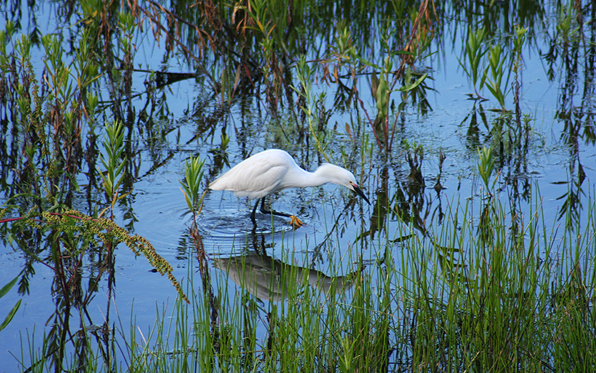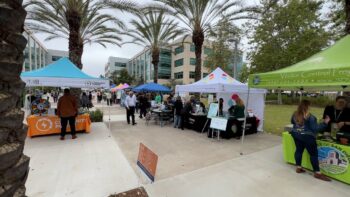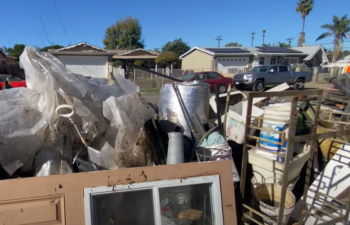Looking at the San Marcos landfill now, it looks like any other natural hillside. You’d never know that it sits on top of 12.5 million cubic yards of trash. Instead, you would observe native plants and trees, the endangered California Gnatcatcher, deer, owls, bobcats, rattlesnakes and other native wildlife perhaps stopping along Copper Creek or making their way through the thick foliage.
“There’s just a whole gambit of wildlife out there. They did a good job of putting native habitat out there,” said Greg Weston, landfill maintenance supervisor with the County’s Department of Public Works. “I saw a mountain lion out there once. I’ve seen a bobcat at night. It’s when you see most of the nocturnal ones.”
The now inactive San Marcos landfill is not an area open to the public, but it is visible to hundreds of homes in the San Elijo Hills area. The landfill operated from 1979 to 1997 when it was closed and capped.
Normally, when a landfill is capped, the County maintains it but cannot always spend the time and money to restore it to its natural beauty. In this case, the county reached an agreement with the city of San Marcos to restore the habitat.
“We feel it’s a successful project,” said Jason Forga, senior civil engineer with Public Works. “In the end, it turned out to be a positive because when we planted the native plants out there, it did bring back the native wildlife out there.”
The County first installed an irrigation system to water the plants for the first few years until they became well established. They used a special vegetative soil mixture that allows native plants to take root, and then seeded 102 acres with seeds collected within a five mile radius of the landfill. By using those seeds, the County was assured that the coastal sage scrub and chaparral varieties would not only blend in but would also grow in that microclimate.
After it was seeded, the County also planted 26,000 container plants to vary the maturity and height of plants in the area. Oak trees were also planted around the outer areas. Forga said they no longer have to water the plants because the plants can survive with normal rainfall. In previous years, they have supplemented with water if it was very dry. They also try to weed out invasive plant species whenever possible.
As they do with all closed landfills, County staff maintains the land as it settles. A camouflaged methane gas collection system is set up to ensure the gas doesn’t vent into the atmosphere or migrate to surrounding properties. Most of the methane gas is directed to a flare where it is destroyed, a small percentage of the better quality methane gas is mined and turned into electricity by an independent gas and energy company.
A groundwater system is also installed that allows the County to test the water quality. Workers perform routine maintenance activities to make sure surface water drains off the landfill and doesn’t pond. In addition to that, they mow the access roads and create a fire break around the site, Forga said.
Still, the truly unique and exciting result from the project has been the transformation of a barren landscape to one that is now teeming with native wildlife.
Weston said he provides water feeders for the animals and at a certain time of day, you can find gnatcatchers and quail and other birds getting a drink. The county has even put up owl boxes to attract Horned owls and barn owls to help control the squirrel and gopher population.
The maintenance supervisor said he really enjoys observing the wildlife at the landfill. He has been able to observe two Great Horned Owls and their four owlets, which he called “cute as can be.” And he even came upon a doe giving birth.
“Each year it just gets better (as the plants mature and more animals come through),” said Weston. “It makes work fun out there. When you have a buck chasing a doe, it makes if feel like you’re not in the city anymore.”






